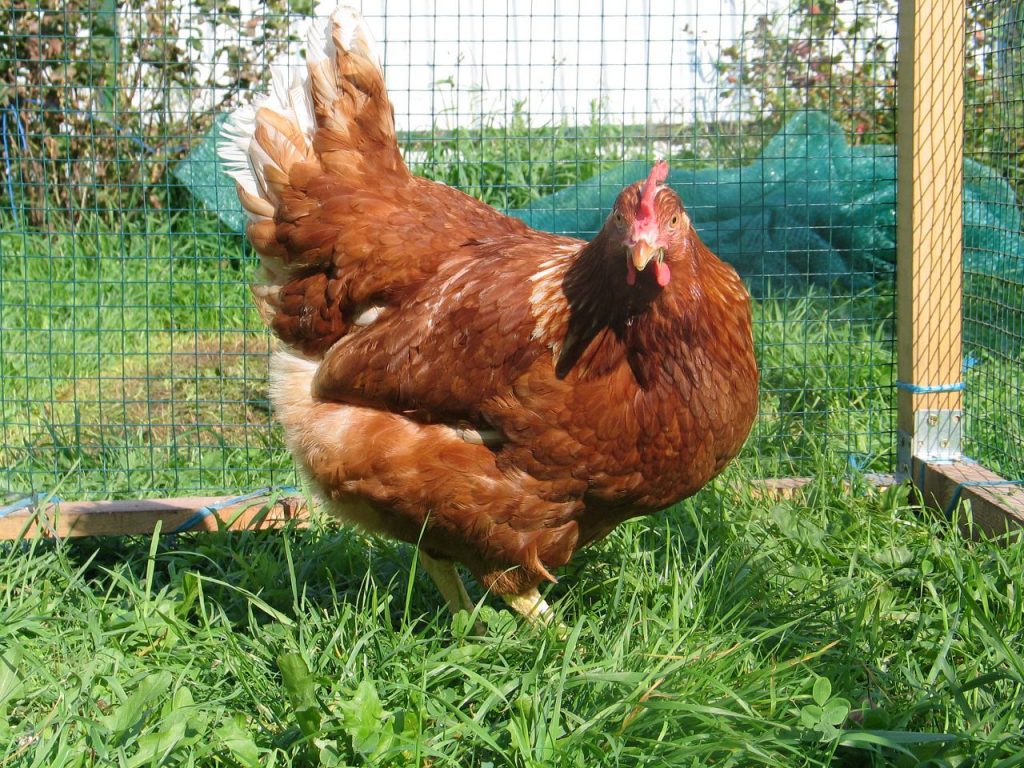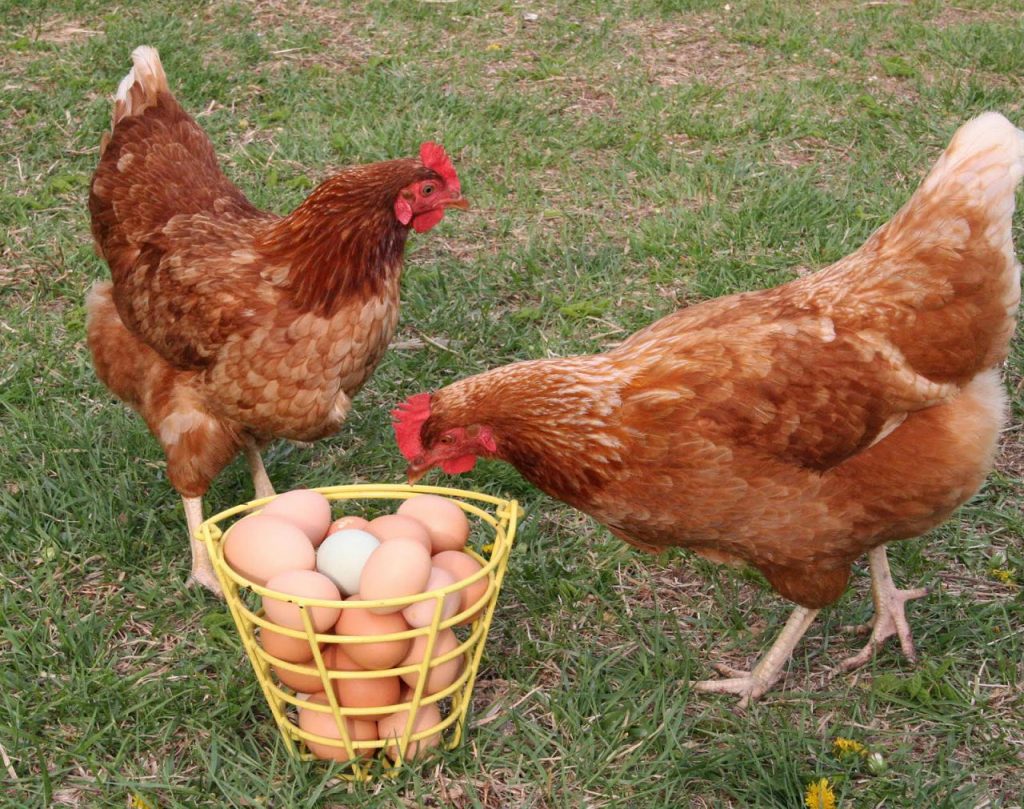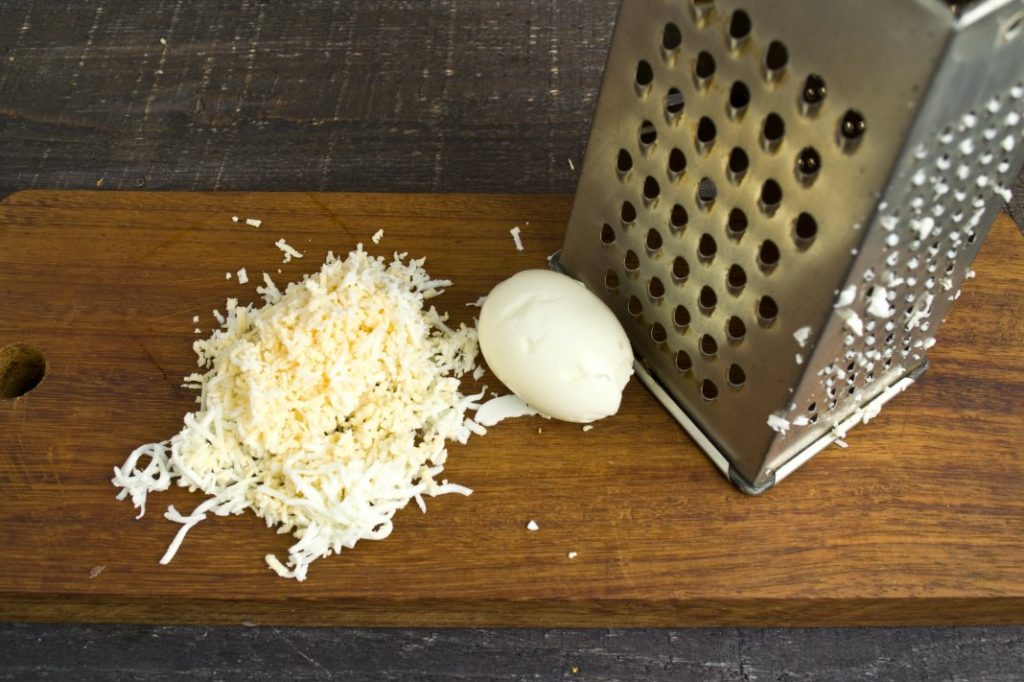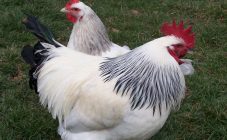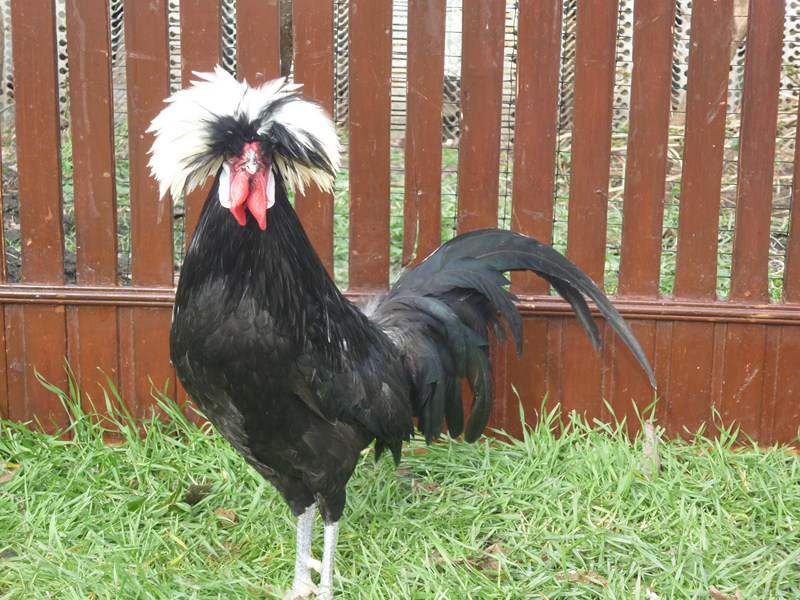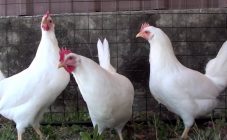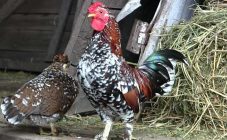Content:
The use of Redbrough chickens has a long history. They have established themselves as a high-quality meat and egg breed, while undemanding in care. Growing these birds can be a good choice, both for farms and for breeding in a personal plot.
general information
Red Bro are the best chicken for meat and eggs, they were bred in Britain. Obtained by crossing Cornish chickens with fighting breeds of birds. Currently, active work on breeding the Redbro breed is underway in France and the United States. Hubbard has over 90 years of experience in these birds. In Russia, many farms also work with Red Bro chickens, one of the main reasons for this is their productive qualities.
In Russia, it is not customary to divide this breed into species, but in Europe and in the USA such a division exists. It is customary to divide birds into two categories:
- Redbro C;
- Redbro M.
This is a breed of meat and egg directions, respectively.
Breed characteristics
Redbro breed of chickens description says the following. The birds are large, have dense plumage, and a large head.
Layers are characterized by the following features: a small beak, a ridge of bright red color, which has a pod-shaped or leaf-shaped shape, bright earlobes.
They have powerful, muscular legs with well-developed strong metatarsals.
The usual chicken color is red or brown. There are birds of this species that have a pure white color, and among them there may be cockerels and chickens.
Laying hens show high productivity. From one chicken you can get at least 160 eggs annually. There are experts who call other numbers: from 280 to 300 eggs in one year.
Redbro birds produce tasty meat. The weight of one chicken can reach three kilograms, and a rooster - four and a half kilograms. The main weight of the birds is fattened by the time when their age reaches six months. Redbro chickens have lean and slightly fibrous meat. In terms of its gastronomic performance, it falls into the highest category.
Eggs in chickens are of medium size. They are white, sometimes light beige is possible. Usually the weight of one egg is 60-70 grams.
It is possible to purchase hatching eggs (50-70 rubles) or chickens (seven-day, from 200 rubles), both in Moscow and in other regions of the country.
Growing
When purchased, thoroughbred chicks of this breed can be easily confused with representatives of ordinary breeds, while they are more expensive. If you buy from random sellers, they can swap them when selling. Therefore, when purchasing chicks for growing, you need to be careful and contact trusted merchants.
Although this species of birds has high productive characteristics, it does not require special care, compared to the breeds common for Russia:
- They tolerate typical Russian weather well.
- Normal food is suitable for them.
When compared to broilers, they have significant advantages. They gain weight quickly enough, have a high resistance to disease, and tolerate heat and cold well.
On the other hand, their meat is no worse than broiler meat.
When growing them, there is no need to pay special attention to observing the temperature regime.Redbro chickens tolerate temperatures ranging from -7 to 25 degrees.
By their nature, Red Bro chickens are livable. Their behavior demonstrates a peaceful, calm disposition. Therefore, it is permissible to keep them together with birds of other breeds.
When growing, it is not customary to use cells. These birds have a very freedom-loving breed character. Usually they are grown in a chicken coop, where there is a lot of free space, and there is a free exit for walking. They are unpretentious and do not require special conditions of detention.
These birds are suitable both for those who are going to breed them on a personal plot, and for those who are going to be engaged in industrial cultivation of Redbroughs. The most common reason for the owner choosing this option is the desire to purchase birds with which you can get a large number of eggs.
In order to get one egg from a hen, she must eat every day:
- grain not less than 50 grams;
- wet mash must be provided with at least 30 grams;
- you need to cook 100 g of boiled potatoes;
- cakes will be required in the amount of 10 g;
- hay flour is also needed 10 g;
- you need 100 grams of milk;
- still need a few pinches of salt and chalk.
In this case, the chicken must have a constant source of clean water.
Feed consumption per day
In order to feed one bird, you will need to provide:
- Above two weeks of age, Redbro chicks should receive 100 to 150 grams of compound feed daily.
- A three week old chicken will need more food: about 18-200 grams.
- When the bird is one month old, consumption will increase, now 200-220 grams of compound feed will be needed.
- When the chicken is 5 or six weeks old, the ration will be 230 to 240 grams.
- At the age of 7-8 weeks, 245-250 g will be required.
- A bird that is six months old will eat 350 grams of compound feed every day.
Breeding features
In order to get good results, certain conditions must be provided. It is important for day old chicks that they have constant free access to fresh cottage cheese and milk. They need finely chopped greens.
A hard boiled egg must also be provided for these chicks. Before use, it must be chopped on a grater.
When the chickens are a little older, dry and wet mash should be included in their diet.
The following foods are required to feed adult specimens. Chopped vegetables and fruits will be a tasty dish for them. If there are fruit trees, then it is suitable for chickens if they will be fed with fruits that have fallen to the ground, even if they are a little rotten, it's okay.
For the successful development of the breed of Redbro chickens, access to shells or small stones, as well as ash and chalk, must be provided.
It is important to feed so that future eggs have a stronger shell. However, it is important to provide a suitable diet. For this purpose, cake, potatoes, pine flour, silage and milk are added to it.
When raising Redbro chickens at home in a poultry house, it is necessary to ensure the availability of perches, drinkers, and feeders in sufficient quantities.
Keep in mind that they love to take dry baths, which protect them from parasites. To provide such an opportunity, you need to install boxes with sand and ash.
Raising chickens at home should take into account that these birds are very fond of cleanliness. Cleaning should be done weekly. When cleaning, remove the top layer of straw mat and then lay a new one.
Although the description of Redbrough's chickens states that they are resistant to disease, it is advisable to vaccinate nevertheless, reducing vulnerability to various possible diseases. The poultry house, where they will spend most of their time, must be disinfected.
To decontaminate a room, you can use the following composition:
- take a 2% caustic soda solution;
- add 3% formalin.
Instead of the latter substance, you can use 3.5% formalin. It is recommended to whitewash the walls and ceiling with lime. After processing, the room is ventilated throughout the day, then birds can be placed there.
Breed advantages and disadvantages
The Redbro chicken breed has important advantages:
- When raising young animals, a large percentage survive.
- Chicken meat is dietary.
- High egg production of Redbro broilers.
- They feed well, gain weight quickly.
- They have an attractive appearance.
The disadvantages include the external similarity to ordinary breeds, which makes it possible for unscrupulous sellers to pass off ordinary chickens for them.
This breed is distinguished by its high egg production and delicious meat. At the same time, caring for the Redbro breed is no more difficult than for common breed chickens.
